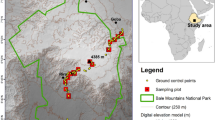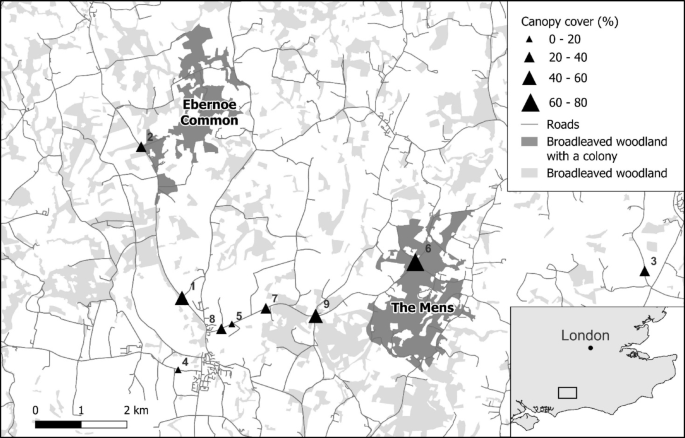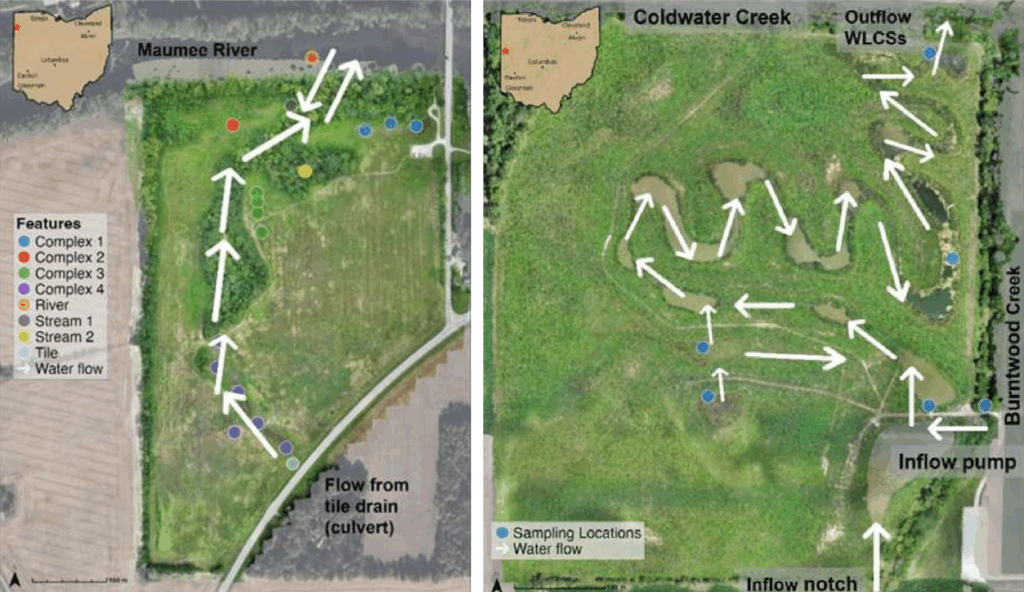Report on the Long-Term Ecological Impacts of the 946 CE Changbaishan Millennium Eruption and Implications for Sustainable Development Goals
1.0 Introduction
This report analyzes the enduring ecological consequences of the 946 CE Millennium Eruption (ME) of the Changbaishan volcano. The study reconstructs pre-eruption vegetation and compares it with the current ecosystem to understand millennial-scale recovery processes. This analysis provides critical context for evaluating contemporary environmental changes, particularly in relation to United Nations Sustainable Development Goal 13 (Climate Action) and Sustainable Development Goal 15 (Life on Land). By distinguishing between the legacy effects of a massive natural disturbance and the impacts of recent climate warming, this research informs strategies for the conservation and sustainable management of mountain ecosystems.
2.0 Background and Methodology
The 946 CE Millennium Eruption was one of the largest explosive volcanic events of the Common Era, depositing vast quantities of tephra and pyroclastic flows that fundamentally reshaped the landscape and ecosystems of Changbaishan. Understanding the recovery from this event is crucial for managing terrestrial ecosystems and mitigating the effects of climate change, aligning with the objectives of SDG 15 and SDG 13.
2.1 Study Approach
A multi-proxy approach was employed to reconstruct and compare past and present vegetation:
- Analysis of Carbonized Trees: 102 carbonized tree samples preserved in ME deposits were analyzed to determine the species, age, and structure of the pre-eruption forest.
- Phytolith Records: Phytolith analysis from peatland cores was used to reconstruct vegetation changes over the past millennium.
- Contemporary Forest Surveys: Modern forest plots were established and surveyed to provide a direct comparison with the pre-ME forest composition.
- Remote Sensing: Satellite imagery from the past four decades was analyzed to quantify recent changes in the alpine tundra vegetation, highlighting the accelerating impacts relevant to SDG 13.
3.0 Key Findings: A Millennium of Ecological Transformation
The research reveals profound and lasting differences between the pre-eruption and present-day vegetation, underscoring the long-term recovery trajectory of an ecosystem post-disturbance. These findings are foundational for efforts to protect and restore terrestrial ecosystems under SDG 15.
3.1 Changes in Montane Forest Composition
Significant shifts in forest structure and species dominance were identified:
- Pre-Eruption Forest (c. 946 CE): The montane forest was a climax community dominated by conifers, which accounted for approximately 87% of individual trees. Key species included Picea jezoensis and Pinus koraiensis.
- Present-Day Forest: The contemporary forest shows a higher abundance of broad-leaved species. Conifers now account for only ~54% of trees, while species like Acer, absent in the pre-ME samples, are now present.
This transformation reflects a long-term successional process following the eruption, rather than being primarily driven by recent climate change.
3.2 Altitudinal Shifts and the Creation of Alpine Tundra
The study provides compelling evidence of a major downward shift in vegetation zones:
- Before the ME, higher elevations currently characterized as alpine tundra were covered by a spruce-dominated forest. Carbonized spruce trees were found well above the modern alpine treeline.
- The eruption destroyed this high-elevation forest, and the resulting tephra deposits created conditions that now sustain an alpine tundra ecosystem. This represents a complete transformation of a terrestrial ecosystem, a core concern of SDG 15.
3.3 Contemporary Dynamics: The Overlapping Impact of Climate Change
While the legacy of the ME is the primary driver of the current ecosystem’s structure, recent warming is accelerating new changes, directly impacting targets within SDG 13 (Climate Action).
- Tundra Vegetation Shift: Over the last four decades, the alpine tundra has seen an increase in herbaceous plants at the expense of the dominant shrub, Rhododendron aureum.
- Treeline Advancement: Recruitment of Betula ermanii (birch) trees into the tundra zone has significantly increased since 1985, coinciding with a period of rapid regional warming. This warming-induced upward migration threatens the existence of the alpine tundra, a unique ecosystem.
4.0 Emphasis on Sustainable Development Goals (SDGs)
The study’s findings have direct and significant implications for several Sustainable Development Goals, particularly those focused on environmental stability and biodiversity.
4.1 SDG 15: Life on Land
This goal calls for the protection, restoration, and sustainable use of terrestrial ecosystems. The Changbaishan study serves as a critical case study for several targets:
- Ecosystem Restoration and Biodiversity: The research documents the millennial-scale recovery of a forest ecosystem following catastrophic land degradation. It highlights that the current biodiversity and structure are a direct legacy of this event. This long-term perspective is essential for setting realistic restoration goals (Target 15.1, 15.3).
- Mountain Ecosystems: The transformation of a high-altitude forest into tundra and the current threat to that tundra from climate change directly relate to the conservation of mountain ecosystems and their biodiversity (Target 15.4).
- Halting Biodiversity Loss: The potential disappearance of the Changbaishan alpine tundra, the southernmost of its kind in eastern Asia, represents a significant loss of biodiversity. The study provides evidence of the drivers of this threat, informing urgent conservation action (Target 15.5).
4.2 SDG 13: Climate Action
This goal aims to take urgent action to combat climate change and its impacts. The report contributes vital knowledge for climate science and adaptation strategies:
- Attributing Environmental Change: By establishing a pre-industrial ecological baseline and tracking recovery from a past disturbance, the study allows for a more accurate attribution of recent vegetation changes to anthropogenic climate change. This strengthens the scientific basis for climate action (Target 13.3).
- Climate Adaptation: The observed rapid advance of the treeline and the decline of tundra vegetation are clear indicators of climate change impacts on vulnerable ecosystems. This information is crucial for developing adaptation strategies to build resilience and protect biodiversity in mountain regions (Target 13.1).
5.0 Conclusion and Recommendations
The contemporary vegetation composition of Changbaishan is a legacy of the 946 CE Millennium Eruption, demonstrating that the impacts of major natural disturbances can persist for over a millennium. Superimposed on this long-term recovery is the accelerating pressure of modern climate change, which is driving rapid ecological succession and threatening the unique alpine tundra biome.
To effectively pursue SDG 13 and SDG 15, it is recommended that:
- Conservation and land management policies for Changbaishan must integrate the long-term ecological context of post-eruption recovery.
- Climate adaptation strategies should prioritize the monitoring and protection of the alpine tundra, recognizing its vulnerability to warming-induced encroachment by forest species.
- Future ecological research must consider the enduring impacts of major past disturbances when evaluating the effects of recent climate change on vegetation dynamics.
1. Which SDGs are addressed or connected to the issues highlighted in the article?
SDG 13: Climate Action
The article directly connects to SDG 13 by examining the impacts of climate change on a specific ecosystem. It investigates how “present warming trends are likely to drive the ecological succession towards a reduction of the alpine vegetation zone.” The study analyzes the recruitment of tree species in relation to rising temperatures, stating that “recruitment of these small broad-leaved trees has accelerated as regional temperatures have increased” and that “recent warming has accelerated the upward shift of the treeline on Changbaishan.” This focus on understanding and documenting the ecological consequences of climate change is central to SDG 13.
SDG 15: Life on Land
This is the most relevant SDG, as the entire article is a detailed ecological study of a terrestrial ecosystem. It addresses the long-term impacts of a major natural disturbance (volcanic eruption) and recent climate change on forests and mountain biodiversity. The research focuses on protecting, restoring, and promoting the sustainable use of the Changbaishan mountain ecosystem. Key issues discussed include:
- Forest Degradation and Recovery: The article compares the pre-eruption forest, which was “dominated by conifers,” with the current forest that has a “higher abundance of broad-leaved species,” documenting a millennium-long process of ecological recovery.
- Biodiversity and Habitat Loss: It highlights the threat to the unique alpine tundra, noting that the “likely consequence is a decline or even disappearance of tundra vegetation” due to encroachment by other species driven by warming.
- Mountain Ecosystems: The study is explicitly centered on the Changbaishan mountain, analyzing its distinct vegetation zones, from montane forests to the alpine treeline and tundra, and how they are changing over time.
- Land Degradation: The article discusses the initial land degradation caused by the eruption, which covered “wide areas of land with tephra,” and the subsequent slow recovery on these volcanic deposits. It also mentions “unvegetated areas” of ash still present today.
2. What specific targets under those SDGs can be identified based on the article’s content?
SDG 13: Climate Action
- Target 13.1: Strengthen resilience and adaptive capacity to climate-related hazards and natural disasters in all countries.
The article analyzes the ecosystem’s response to a massive natural disaster (the Millennium Eruption). By studying the thousand-year recovery process, it provides critical insights into the long-term resilience of forest ecosystems. It also examines the ecosystem’s adaptive response to the ongoing climate-related hazard of global warming, such as the “warming-induced upward migration of the alpine treeline.” This knowledge is foundational for understanding and strengthening ecosystem resilience. - Target 13.2: Integrate climate change measures into national policies, strategies and planning.
While the article is a scientific study, its findings provide the evidence base necessary for integrating climate change measures into conservation planning. The conclusion that “present and future changes in forests… are not only driven by their response to climate change… but can also be partly attributed to the long-term impacts of the Millennium Eruption” is a crucial insight for the management of the Changbaishan National Nature Reserve, ensuring that policies are based on a comprehensive understanding of both historical and current drivers of change.
SDG 15: Life on Land
- Target 15.1: Ensure the conservation, restoration and sustainable use of terrestrial and inland freshwater ecosystems and their services, in particular forests, wetlands, mountains and drylands.
The study provides a detailed analysis of the Changbaishan mountain forest ecosystem, reconstructing its pre-eruption state and tracking its recovery. This historical ecological data is essential for setting realistic conservation and restoration goals that account for long-term natural dynamics. - Target 15.3: By 2030, combat desertification, restore degraded land and soil… and strive to achieve a land degradation-neutral world.
The volcanic eruption led to severe land degradation by burying landscapes in “proximal tephra fall and flow sequences.” The article’s investigation into the slow, millennium-long process of vegetation succession and soil development on these deposits is a direct study of recovery from land degradation. The analysis of “tephra-covered and unvegetated areas” using remote sensing quantifies the extent of land that remains degraded. - Target 15.4: By 2030, ensure the conservation of mountain ecosystems, including their biodiversity.
The research is entirely focused on the conservation of the Changbaishan mountain ecosystem. It documents changes in biodiversity by comparing the “pre-ME and present vegetation species composition.” It specifically highlights the vulnerability of the “alpine tundra environment,” which was formerly a “spruce forest,” thereby providing critical information for the conservation of this specific mountain habitat. - Target 15.5: Take urgent and significant action to reduce the degradation of natural habitats, halt the loss of biodiversity…
The article sounds an alarm about an ongoing habitat degradation process, stating that “the present-day alpine tundra on Changbaishan, the most southernmost in eastern Asia, is shrinking.” It documents how alpine shrubs are “being replaced by herbs and trees,” leading to a potential “disappearance of tundra vegetation.” This constitutes a direct call to action to protect this unique habitat and its associated biodiversity from the impacts of climate change.
3. Are there any indicators mentioned or implied in the article that can be used to measure progress towards the identified targets?
Indicators for SDG 13 Targets
- Implied Indicator for Target 13.1: The study’s methodology of reconstructing past vegetation and analyzing current ecological succession provides a framework for assessing ecosystem resilience. The rate of forest recovery, changes in species dominance, and the upward shift of the treeline can be used as metrics to monitor the adaptive capacity of the ecosystem to both past and present environmental shocks.
Indicators for SDG 15 Targets
- Indicator 15.1.1 (Forest area as a proportion of total land area): The article provides data analogous to this indicator by reconstructing historical forest cover and comparing it to the present. The finding that higher elevations “were covered in a spruce forest before the eruption” but are now “dominated by alpine tundra” represents a quantifiable change in forest area over a long timescale.
- Indicator 15.3.1 (Proportion of land that is degraded over total land area): The study uses remote sensing to calculate the “areal fraction of… ash (unvegetated areas) in the tundra over the last four decades.” This provides a direct measurement of the proportion of land that remains degraded from the volcanic eruption within the high-altitude study zone.
- Indicator 15.4.2 (Mountain Green Cover Index): The article’s use of “remote-sensing images… to extract the distribution of different vegetation types near the tundra from the 1980s to 2010s” is a practical application of this indicator. It quantifies changes in the cover of shrubs (*R. aureum*), herbs, and unvegetated areas on the mountain slopes, directly measuring shifts in green cover.
- Implied Indicators for Target 15.5: The article uses several specific metrics to measure habitat degradation and biodiversity loss. These include:
- Changes in tree species composition: The shift from a conifer-dominated forest (~87% pre-eruption) to a mixed forest with more broad-leaved species (~54% conifer in the present) is a clear indicator of biodiversity change.
- Rate of habitat conversion: The study quantifies the “decrease of *R. aureum*” and the “increase of herbs” per decade at different elevations, measuring the rate at which the tundra habitat is being transformed.
- Recruitment rate of invasive or encroaching species: The calculation of an “increasing recruitment rate (~32% per decade) for all 598 [*B. ermanii*] trees in the plot during 1985–2015” serves as a precise indicator of species encroachment into the tundra habitat.
4. Create a table with three columns titled ‘SDGs, Targets and Indicators” to present the findings from analyzing the article.
| SDGs | Targets | Indicators |
|---|---|---|
| SDG 13: Climate Action | 13.1: Strengthen resilience and adaptive capacity to climate-related hazards and natural disasters. | Analysis of long-term ecosystem recovery post-eruption and monitoring of warming-induced treeline migration as measures of resilience and adaptive capacity. |
| SDG 15: Life on Land | 15.1: Ensure the conservation, restoration and sustainable use of terrestrial ecosystems, in particular forests and mountains. | Indicator 15.1.1 (Forest area): Reconstruction of pre-eruption forest cover (e.g., spruce forest in the current tundra zone) compared to present-day vegetation maps. |
| 15.3: Combat desertification, restore degraded land and soil. | Indicator 15.3.1 (Proportion of degraded land): Quantification of the “areal fraction of… ash (unvegetated areas)” using remote sensing data. | |
| 15.4: Ensure the conservation of mountain ecosystems, including their biodiversity. | Indicator 15.4.2 (Mountain Green Cover Index): Analysis of remote sensing images to track changes in the area of different vegetation types (shrubs, herbs, unvegetated ash) on mountain slopes over decades. | |
| 15.5: Take urgent action to reduce the degradation of natural habitats and halt biodiversity loss. | Changes in tree species composition (e.g., conifer vs. broad-leaved abundance); rate of change in tundra vegetation cover; and the recruitment rate of encroaching tree species (*B. ermanii*) into the alpine tundra. |
Source: nature.com







